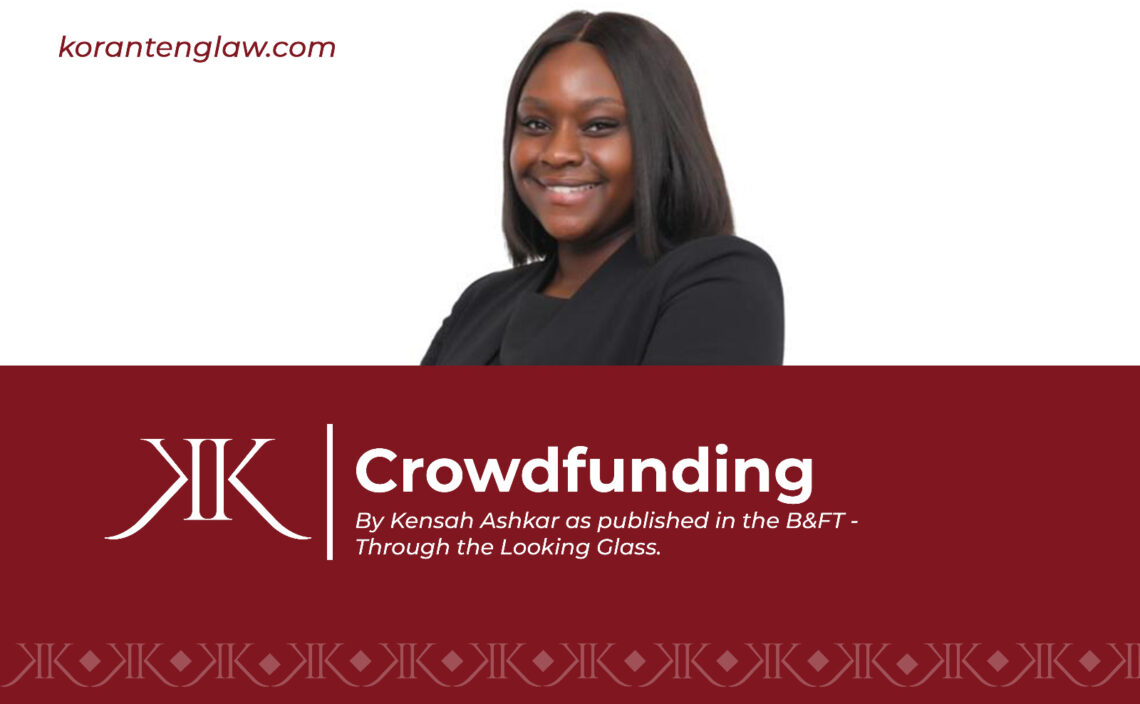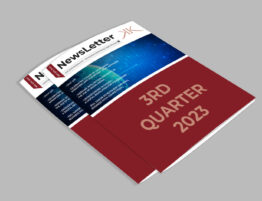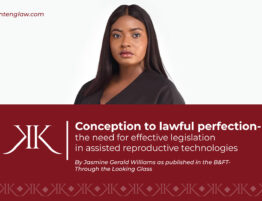
Through the looking glass with Kensah Ashkar: Crowdfunding
Some time ago, the only avenues available for persons looking for funding were for them to use up all their savings, take a loan from a financial institution or a loan or handout from friends or family.Although many believe crowdfunding came about in the late 2000s, some versions of it have existed in our society long before that. Local names such as ‘susu’, ‘nnoboa’ or ‘ntoboa’ refer to forms of crowdfunding and are evidence of the age-old practice.
Crowdfunding generally refers to raising money or soliciting donations to support various causes by getting these amounts of money from a large number of people.
Despite its attractions, there have been fears that this growing practice in the modern digitalised age is not adequately regulated. Regulatory authorities in Ghana have, in recent years, made strides to regulate this practice.
Everyday examples of crowdfunding
On the streets of Accra, you may have seen a mother with her ailing child at a busy traffic light or junction with a placard or sign indicating the ailment her child is battling and the required funds for treatment, asking for contributions from the public. If you patronise our ‘trotros’, you will find that at certain traffic lights, someone might come around with a box asking that you donate to an orphanage. These are both everyday examples of crowdfunding.
Types of crowdfunding
There are different types of crowdfunding. The four common types are donation-based crowdfunding, reward-based crowdfunding, equity crowdfunding, and debt crowdfunding.
Donation-based crowdfunding
This is the most popular type of crowdfunding. People ask for donations from a large number of people to raise money for a cause. It is typically used for raising funds for personal needs or community-based projects. These sympathetic donors receive no reward in return for their donation. Social media is used to create awareness, spread the cause to a wider audience and encourage more donations.
An example of donation-based crowdfunding is a university student seeking funds for the payment of his/her tuition to enable him/her to continue education. Many of us have heard of the term ‘GoFundMe’ used on social media. Some of us may have even contributed once or twice to these ‘GoFundMes’ at some point to causes we deemed worthy. GoFundMe is the most popular donation crowdfunding platform worldwide.
Reward-based crowdfunding
This is normally used to raise funds for new start–ups offering a product or a service. Donors can earn rewards based on the amount they donate to the fund. The reward is usually the product or service being launched or prizes donated by partner companies. For example, a poet seeking to raise funds for publishing his collection of poems may offer donors personalised poems or a free poetry writing class depending on the amounts donated. Kick–starter is one of the top rewards crowdfunding platforms.
Equity crowdfunding
This is essentially crowd-investing. It is used by small to medium-sized companies seeking capital injection to grow their businesses. In exchange for donations, donors receive a percentage ownership in the fundraising company. The size of the shareholding depends on the amount donated. Investors may receive financial returns on their investment if the business is profitable. It carries risk, similar to trading on the stock market such as losing money due to poor performance or failure of the company.
This type of crowdfunding allows companies to raise funds without the hassle that may come with listing as a public company and will widen their reach in comparison to a traditional private placement. It also saves companies from jumping through the hurdles that usually come with acquiring a business loan.
Debt crowdfunding
Debt crowdfunding is also called peer-to-peer lending or crowdlending. It is also a form of crowdfunding used by businesses to raise funds when needed. It functions like a bank loan. Businesses or individuals collect funds in the form of loans with the requirement to pay back at a later time.
Lenders may also receive a previously defined interest within a certain time period. The approval process for crowdlending is usually faster and less complicated than it would be at a bank. In some instances, crowdlending offers more favourable terms and lower interest rates. It is suitable for a business with a predictable cashflow to ensure repayment of the loan on schedule. Honeycomb Credit is a popular debt crowdfunding platform offering loans of up to US$500,000 with monthly repayment.
Advantages of crowdfunding
Crowdfunding, done digitally, is a method to quickly raise funds. Projects that require funding may find it time-consuming and disappointing to go from corporation to corporation seeking support as part of their corporate social responsibility. People with personal financial emergencies, such as pending medical costs, may not have the luxury of time to source funds. Digital crowdfunding allows them to reach more people in a shorter period of time.
Another advantage of digital crowdfunding is the wide reach. Projects and charities may also use this method to increase their reach. Crowdfunding makes use of the vast number of people one can access through social media platforms and crowdfunding websites to bring contributors to those looking for contributions. For entrepreneurship ventures seeking funding, the infinite pool of potential investors beyond the traditional circle of family and friends is particularly alluring. Entrepreneurs that may have a worthwhile idea without a portfolio strong enough to appease venture capitalists may use crowdfunding as an alternative to lift their ideas off the ground. The global crowdfunding market is expected to nearly triple in total annual donations by 2025 to US$28.8billion.
For businesses launching new products and services, it is a great way for the business to interact with potential customers, gain feedback and gauge public opinion on the product or service. If these businesses use reward-based crowdfunding, donors also receive rewards for their donations.
In addition, crowdfunding allows businesses to get the capital injection required without taking on a large amount of debt – if donation-based or reward-based crowdfunding is used. It may also be the only available option for an entrepreneur who has, so far,been unable to secure a business loan usually involving several complex requirements.
Reward-based crowdfunding allows entrepreneurs to raise funds for their businesses without yielding ownership of their companies. Donors receive giveaway perks or rewards in exchange for their support instead of shares in the company. This way, once the company becomes profitable, it owes these donors nothing more.
Certain businesses use crowdfunding as a market test to determine whether the general public will be interested in the product or service they are offering. It acts almost like a feasibility study. Large amounts of donation will signal public approval and vice versa. This informs the business of its prospects in the future and whether or not to continue seeking capital injection.
Crowdfunding may also serve a marketing purpose. Crowdfunding campaigns may generate buzz among the general public, gain media coverage, and may even go viral. This builds brand value, gets potential new customers and may have the effect of attracting large venture capital investors to throw more funding behind the brand.
Disadvantages of crowdfunding
One disadvantage is the fees associated with crowdfunding platforms. For a platform like Crowdfunder, where the cause is for profit – such as for a business or organisation, the platform charge is 5 percent plus VAT in fees in addition to transaction fees. Fundraisers must suffer this deduction by virtue of using the platform.
On some platforms, if your funding goal is not reached, any funds already donated and held in an escrow account will be returned to donors and the business or individual seeking the funds receives nothing. All the time and energy spent on organising and running the campaign could be a waste.
Entrepreneurs putting their innovative ideas on public crowdfunding platforms run the risk of people with more funding stealing their ideas and getting it to the market faster through other investors or corporations. Some may even steal it and run a parallel campaign on a separate crowdfunding platform. This is largely due to a lack of knowledge of how to protect their intellectual property or a lack of resources to do so.
Certain start–up businesses may suffer from damage to their reputation as a result of ‘resorting’ to crowdfunding. It is as if the business did not have the merit to stand in front of venture capitalists or to go for traditional bank loans and had to settle for the less stringent crowdlending option.
Criminals can use crowdfunding as a way to commit fraud. These persons attempt to collect money for a bogus cause. They ask for donations under false pretenses, mislead potential funders about the nature of the project or cause and prey on the empathy of the public. For nearly every disaster relief effort in recent times, there are a number of crowdfunding scams being run alongside the genuine efforts. During the collapse of the high-rise condominium apartments in Surfside, Florida in June 2021, several GoFundMe fundraisers were created to support supposed victims. Florida state officials came out to warn the public that many were scams and a number of pages were flagged and removed.
On certain crowdfunding platforms, there is delayed access to funds. Fundraisers must wait until the allotted time before receiving funds despite the target being reached before then. The allotted time depends on the duration of the campaign. This could be anywhere between 60 and 90 days.
Crowdfunding in Ghana
In Ghana, crowdfunding has been traditionally used by families, communities of market women, fishmongers, traders and farmers to gather money to meet the needs of their members. These needs may range from raising capital for business ventures, medical emergencies, funeral contributions or funding children’s education. These funds may be gathered in cash or recently, using mobile money wallets.
This age-old practice has been modified through the rise of digitisation and increased access to the Internet. The introduction of mobile money was a step toward a semblance of a crowdfunding platform. Since its introduction, individuals and different types of entities and groups have adopted crowdfunding as a channel for collecting donations and raising funds. The Bank of Ghana (BOG), in its Crowdfunding Policy dated 4th February, 2021 (BOG Crowdfunding Policy), noted the use of mobile money platforms to raise funds for old student association contributions, funeral donations and donations toward medical expenses. The next section will focus on the digitisation of crowdfunding in agriculture.
The case of crowdfarming
Crowdfarming is the crowdfunding of agricultural projects. Over the last few years in Ghana, crowdfarming has gained traction and more platforms are springing up. It is a way of raising finances for farms ahead of planting cycles. Crowdfarming is a welcome response to the difficulties farmers face in relation to access to finance as financial institutions view farming as substantially risky.
Crowdfarming allows the general public to invest a certain amount of money into a particular crop cycle. The platform allows these investors to track their investment – from planting to harvesting and sale of produce. The investors then get a part of the profit from the sale as a return on their investment at the end of the farming cycle.
It allows those who would otherwise be small-scale farmers to have access to money that helps grow the size of their businesses and increase their yield. Some of such crowdfarming platforms in Ghana are Nserewa and Grow for Me. The Securities and Exchange Commission’s (SEC) Ghana Securities Industry (Crowdfunding) Guidelines 2022 (SEC Guidelines) have termed such crowdfarming platforms as Soft Commodities Investment Platforms. There are specific guidelines pertaining to the operation of these crowdfarming platforms. The platforms are subject to additional requirements separate from those applicable to all platforms running other investment models (as discussed as follows) of crowdfunding.
The typical process for crowdfarming is as follows:
Regulation of crowdfunding platforms
The laws that have a bearing on the use of digital crowdfunding in Ghana are as follows: Banks and Specialised Deposit Taking Institutions Act, 2016 (Act 930); the Securities Industry Act, 2016 (Act 929); Payment Systems and Services Act, 2019 (Act 987); the Data Protection Act, 2012 (Act 843); Anti-Money Laundering Act, 2020 (Act 1044); Deposit Protection Act, 2016 (Act 931); and the Cybersecurity Act, 2020 (Act 1038). These laws provide a legal atmosphere fostering compliance with data protection, customer privacy regulations, good governance, accountability, anti-money laundering practices and a general protection of funders’ interests –all vital to the regulation of crowdfunding.
BOG has categorised the four types of crowdfunding into two models – investment models and the non-investment models. The investment models are equity and debt crowdfunding. The non-investment models are donation and reward crowdfunding.
BOG alone regulates the non-investment models. It provides licensing approval for entities running the donation and reward-based crowdfunding models as these types require the ability to collect, hold and disburse payments. These activities are covered under the Banks and Specialised Deposit-Taking Institutions Act, 2016 (Act 930). The models may be used by banks, specialised deposit-taking institutions, dedicated electronic money issuers (DEMIs), and enhanced payment service providers (EPSPs).
DEMIs can provide these services under their licence under the Payment Systems and Settlement Act, 2019 (Act 987), but must create merchant wallets dedicated to the collection of donations. These wallets shall be subjected to regular monitoring and reporting to ensure they are being used for the intended purpose. As EPSPs do not issue electronic wallets or accounts to their customers, they require the support of a bank or specialised deposit-taking institution to provide a custodial account used for deposits to deliver the service. BOG requires the EPSPs to partner with a bank or specialised deposit-taking institution to gain approval to run the non-investment models.
The SEC, with BOG, regulates the equity crowdfunding model. The SEC alone regulates the debt crowdfunding model. In addition to the collection of funds, the equity and debt crowdfunding models involve the investment of these funds. This is not within the permissible activities of institutions licensed under the Payment Systems and Settlement Act. Therefore, any entity in that category will require the approval of the SEC to operate as a crowdfunding intermediary per the Securities Industry Act, 2016 (Act 929) and the SEC Guidelines. The entity must partner with another entity duly regulated by the SEC in order to seek approval.
Practical tips for anyone wishing to participate in crowdfunding
Both funders/sponsors and fundraisers should take note of the following practical tips for their protection.
Conclusion
The benefits of crowdfunding are undeniable and have been recognised for centuries. Digitising crowdfunding has opened up new realms. It is important for bodies – such as BOG and SEC – to regulate it. The SEC Guidelines and the BOG Crowdfunding Policy are steps in the right direction to ensure the necessary structures are in place for the advantages of crowdfunding to be enjoyed whilefunders/investors are protected as much as possible from the ills of the practice.








